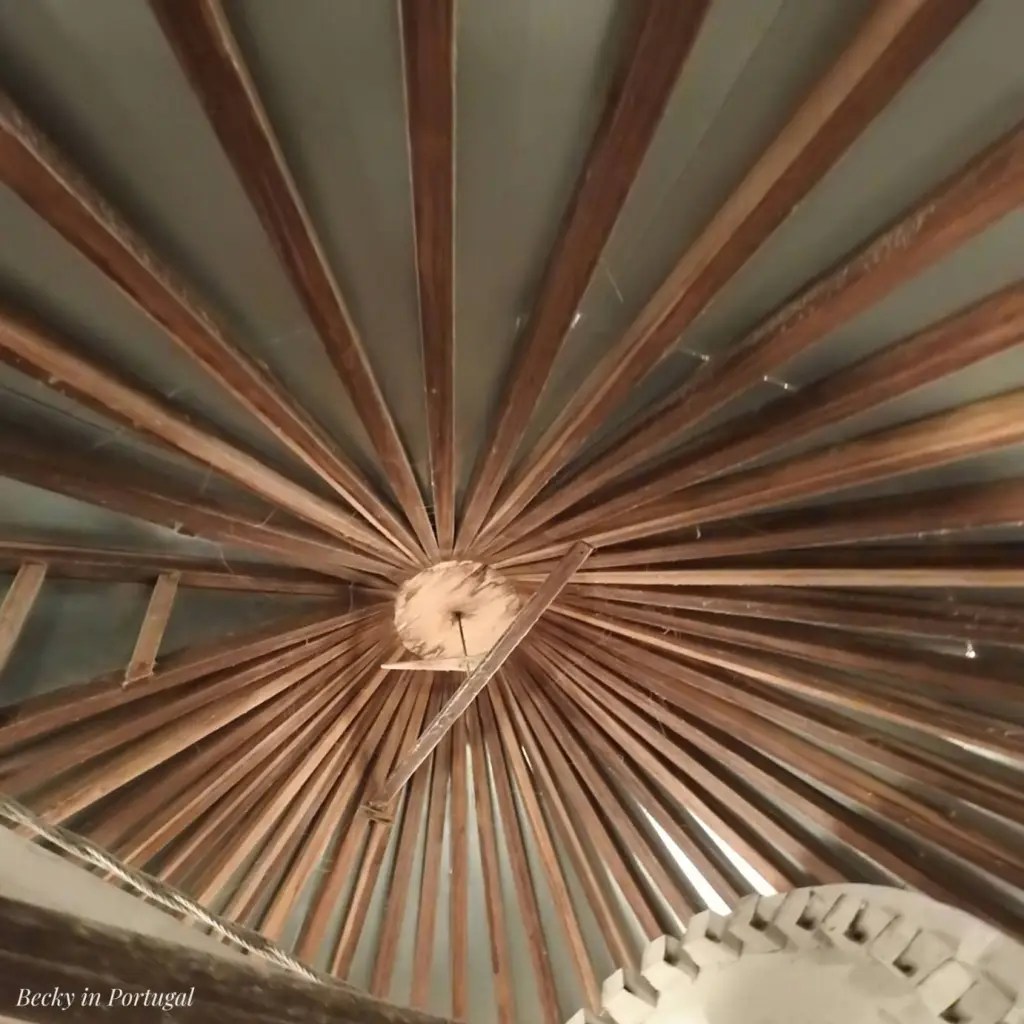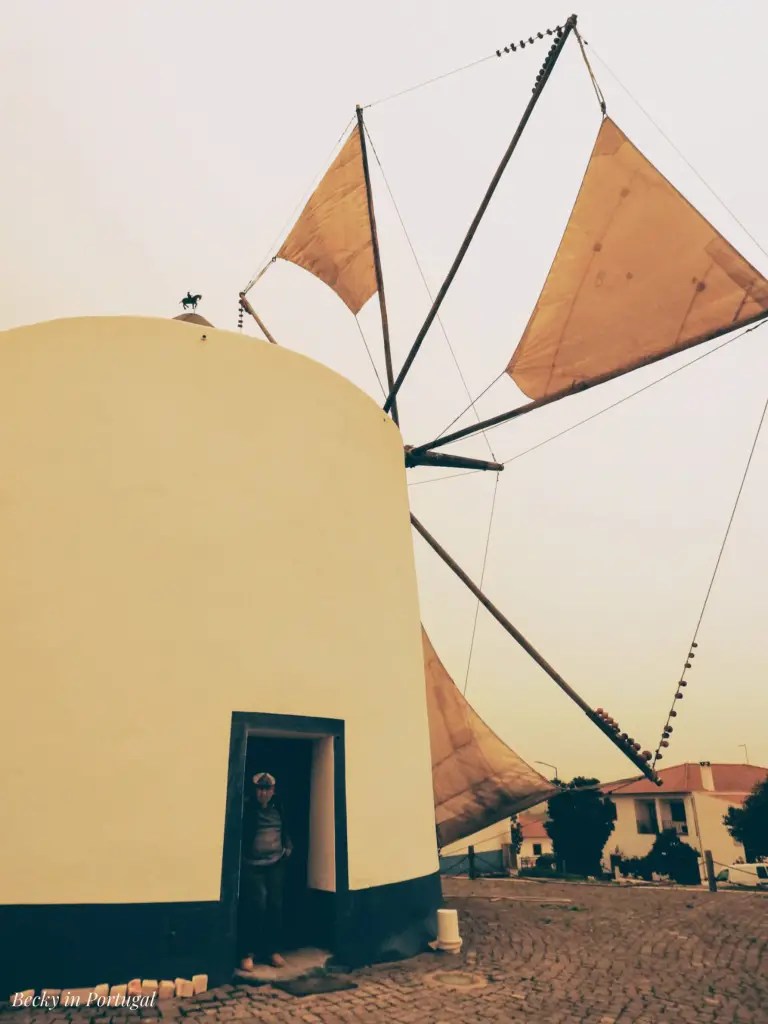In the early days of this blog MrB wrote a fabulous windmills post ‘Tilting at Windmills‘, and at the time we hoped it wouldn’t be too long before we had the opportunity to visit a working mill ourselves. It was to be over five years before we stumbled across one, and it really was a stumble as this windmill has no fixed opening hours. It also happened to be a rather dramatic day for our visit, as thanks to the sepia effect caused by Saharan dust cloud covering the Iberian peninsula it felt like we were stepping back in time.

The windmill, ‘Moinho do Vento‘, is in Castro Verde on the southern edge of Largo da Feira. We were only at this end of town as we were looking for a bakery, and as we turned the corner I noticed the door to the windmill was open and people were heading inside. We decided to get a little closer, and were delighted to discover it was open for visits.
The windmill dates back to the early 19th century, exact dates unknown but apparently there is a sketch of this one in 1813 so it was in operation then! By the 1930/40s it was no longer in use, and we presume this is because it had been replaced by power milling. You can read more on mechanisation of milling and agriculture in another of MrB’s posts here. The mill became a home for the next 60 odd years, before being bought by the local council and refitted/restored into a working museum mill.





It wasn’t just the mechanism inside though that caught our attention. There were also the terracotta pots on the rigging. These pots are called búzio and are an essential part of Portuguese windmills. They make varying sounds as the sails turn. The changes in pitch informing the miller not only the turning speed of the wheels and millstones, but also wind speed, direction and even the humidity. The latter a good alert for approaching storms, enabling the miller to take appropriate action.




The sails were occasionally turning on the day we visited, but sadly I only got a few seconds worth of video inside and didn’t manage to capture any of sounds from the búzio on the rigging. However here’s the few seconds I did capture along with the sounds from a superb German website which shares in great detail in both German and English how these terracotta pots work.
There is a resident miller, and if you look very closely you can see him in two of photographs in the gallery below. (NB he gave me permission to take photographs). On the days he is present you can look round the mill for free, sadly though I cannot tell you which days of the week those are. It all seems to be a bit random! However if you are part of a group then visits can be made by appointment via the tourist office in Castro Verde.



Very interesting and your photos of the windmill are amazing!